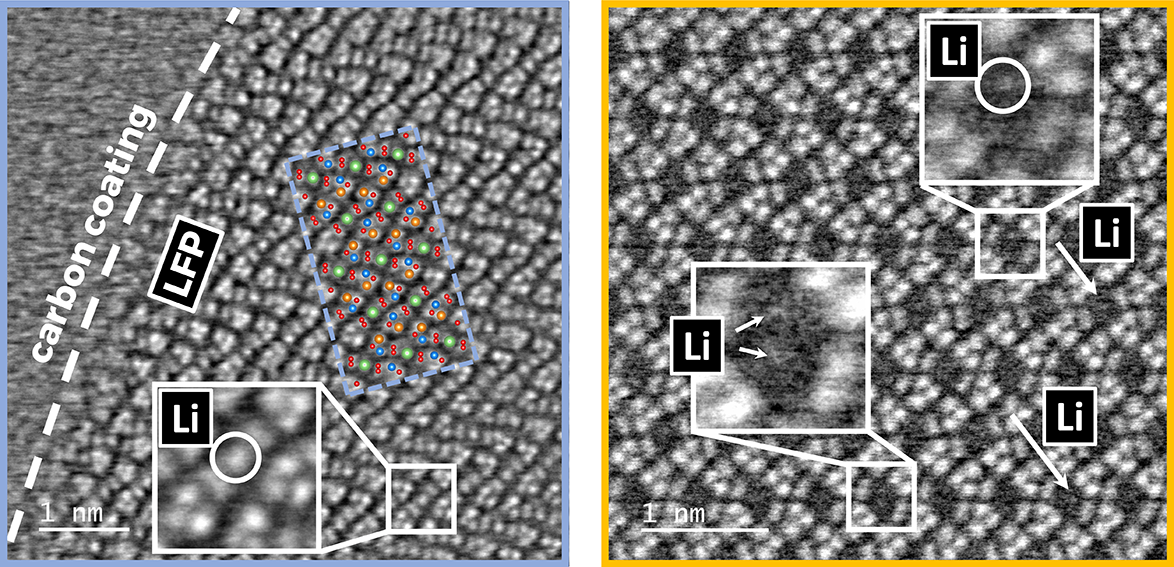Phase Transitions and Ion Transport in Lithium Iron Phosphate by Atomic-Scale Analysis to Elucidate Insertion and Extraction Processes in Li-Ion Batteries
Nikola Šimić, Anna Jodlbauer, Michael Oberaigner, Manfred Nachtnebel, Stefan Mitsche, H. Martin R. Wilkening, Gerald Kothleitner, Werner Grogger, Daniel Knez, Ilie Hanzu
Advanced Energy materials 2024, 2304381
Abstract
Lithium iron phosphate (LiFePO4, LFP) serves as a crucial active material in Li-ion batteries due to its excellent cycle life, safety, eco-friendliness, and high-rate performance. Nonetheless, debates persist regarding the atomic-level mechanisms underlying the electrochemical lithium insertion/extraction process and associated phase transitions. A profound clarity on the fundamental lithium storage mechanisms within LFP is achieved through meticulous scanning transmission electron microscopy (STEM) and selected area electron diffraction (SAED) imaging. This study shows systematical tracking of lithium ions within their respective channels and unveils the phase distribution within individual LFP crystallites not only quantitatively but also at unprecedented atomic-level resolution. Incontrovertible evidence of the co-existence of segregated yet only partially lithiated LixFePO4 regions in electrochemically delithiated LFP crystals are provided using correlative electron microscopic methods and data analysis. Remarkably, by directly tracing ion transport within lithium channels a diffusion coefficient range (10−13–10−15 cm2s−1) for correlated lithium ion motion in LFP is estimated and Funke’s ion transport jump relaxation model is validated experimentally for the first time. These findings significantly advance the understanding of olivine-type materials, offering invaluable insights for designing superior battery materials.

Phase map (a) of an electrochemically delithiated LFP crystal. EELS data (b) confirms the lithium distribution shown in the phase map via the Fe-L2,3 energy shift. The inset FFT in (a) shows three phases, two of which are lithium rich and one lithium poor. A blue square (lithium-rich phase) and an orange square (lithium-poor phase) in (a) mark regions chosen for HR-iDPC imaging. The images of these phases are shown in (c) and (d) respectively. The inset model in (c) depicts an LFP model with Li in green, O in red, P in blue, and Fe in orange. The sample observed was delithiated once without cycling.
N. Šimić, A. Jodlbauer, M. Oberaigner, M. Nachtnebel, S. Mitsche, H. M. R. Wilkening, G. Kothleitner, W. Grogger, D. Knez, I. Hanzu, Phase Transitions and Ion Transport in Lithium Iron Phosphate by Atomic-Scale Analysis to Elucidate Insertion and Extraction Processes in Li-Ion Batteries. Adv. Energy Mater. 2024, 2304381.




